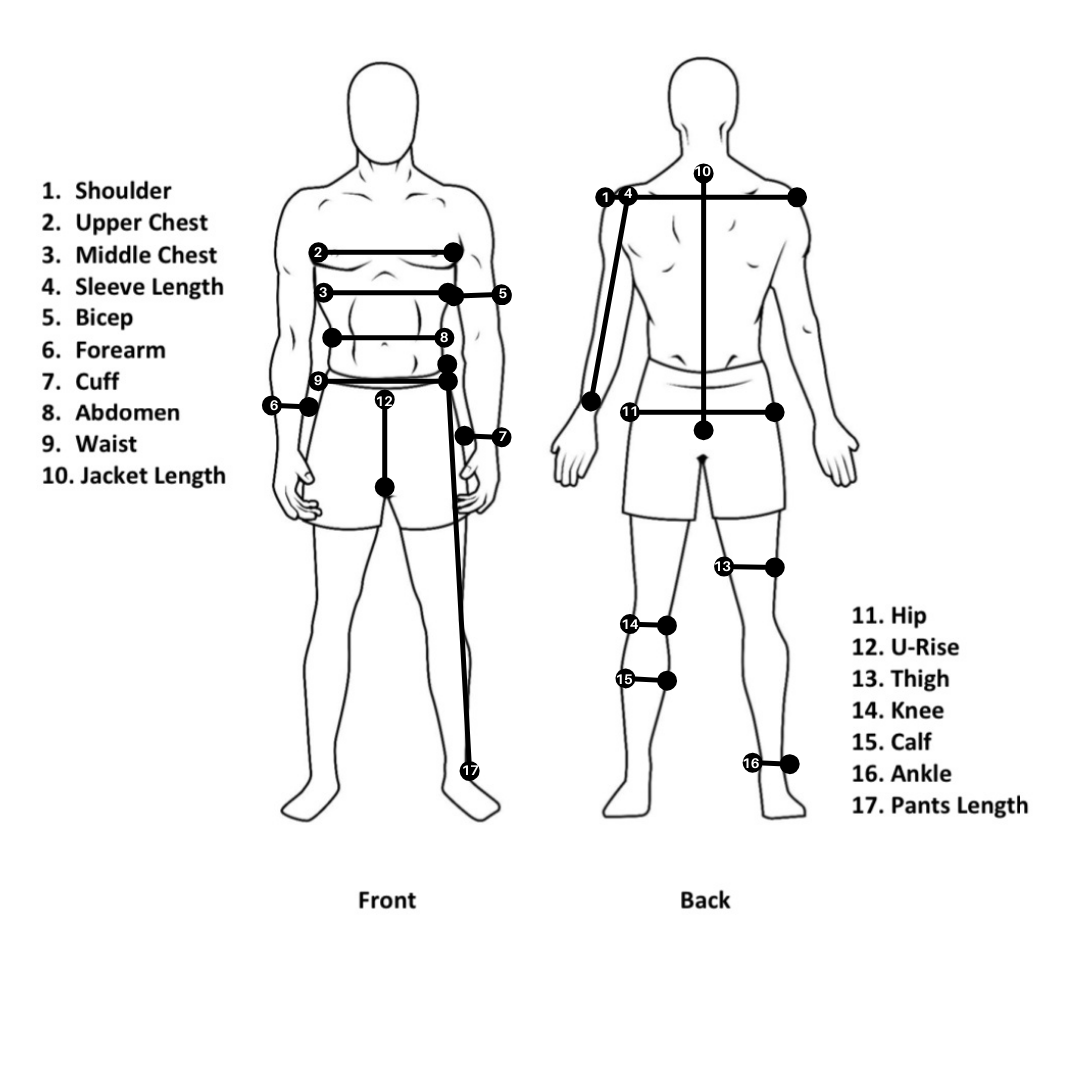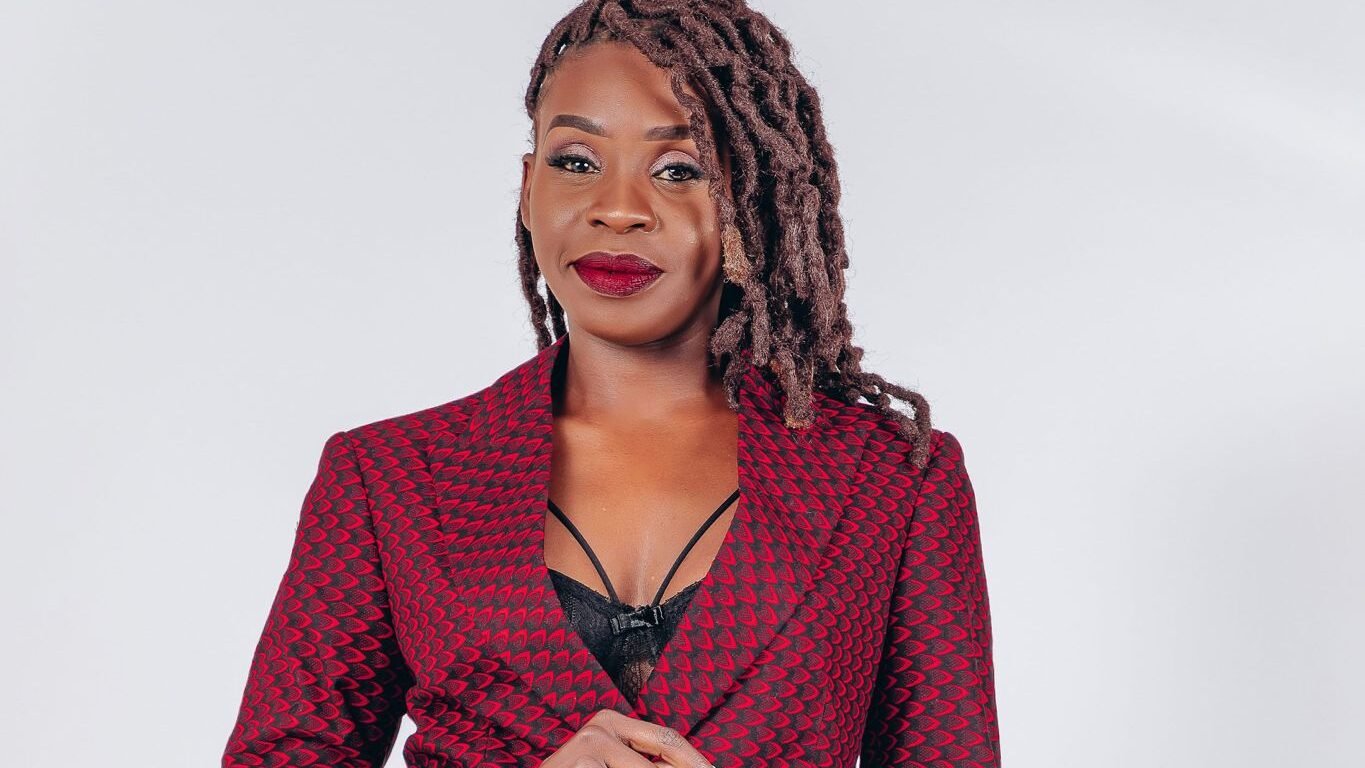The Perfect Fit - Men
How to Measure
Style is only one element of the perfect suit. The other critical element is fit. With suits, you elevate your game from ordinary to extraordinary when you get a suit that compliments every aspect of your body. That distinction shows the world that the suit you acquired was made especially for you, and no one else. That’s where we come in — Our goal is to serve YOU specifically and make sure your needs are met. To that end, as part of our ordering process, we ask that you provide the measurements outlined below after purchasing your garment.
For the best results, we advise that you get your measurements from a tailor. If you do not have access to a tailor, please follow the written instructions and videos to self-measure. Many of our clients self-measure and get great results!! If you’re ever in doubt about certain measurements, always air on the side of adding rather than subtracting to allow for alterations.
Men's Measurements
For best results, do your self measurements with a fitted dress shirt and fitted dress pants.
BLAZER
- Upper Chest
Raise both arms and run the tape measure around the top part of your torso (closer to your front deltoid). Go all the way around your body until the tape measure connects. At the point of contact, ensure there is a little bit of breathing room (about an inch and a half), and that’s the measurement of your upper chest.
- Middle Chest
Raise both arms and run the tape measure around the fullest part of your chest, underneath both your arms. Go all the way around your body until the tape measure connects. At the point of contact, ensure there is a little bit of breathing room (about an inch and a half), and that’s the measurement of your middle chest.
- Shoulders (measured from behind)
Start your tape measure at the joint of one shoulder. Then, run it across the top of your shoulders, behind your neck, and to the joint of your other shoulder.
- Sleeve Length
Place the end of your tape measure on your shoulder deltoid. Slide the tape measure down your arm toward your wrist. Take the measurement at your wrist to find your proper sleeve length.
- Sleeve Bicep
Put your hands by your side, relaxed. Start the tape measure at the top of your bicep muscle and take the tape measure around the bicep until the tape measure connects. Allow about an inch of breathing room.
- Forearm
Put your hands by your side, relaxed. Start the tape measure at the front of your forearm and take the tape measure around the forearm until the tape measure connects. Make sure you measure at the biggest part of the forearm. Allow about an inch of breathing room.
- Cuff
Start the tape measure at the bone of your wrist and go around the entire wrist until the tape measure connects. Leave about an inch breathing room here as well, as in the video. For more accurate results, measure with a long-sleeved shirt on.
- Abdomen
Run the tape measure around the stomach area. Go all the way around your body until the tape measure connects. At the point of contact, ensure there is a little bit of breathing room (about an inch), and that’s the measurement of your abdomen.
- Blazer Length
Start the tape measure from the back of the base of your neck. Run the tape measure straight down until just a little below your buttocks. If you prefer a longer blazer length, you have the freedom to extend the tape measure a little further down, and that’s the blazer length.
Waist
Position the tape measure where you normally wear a belt. Then, wrap the tape measure around your waist, and where the tape connects is your waist measurement. Choose how much breathing room you want for your pants. Give about 0.75 to 1 inch breathing room.
Hip
At the strongest/largest part of the buttocks, measure the circumference around your body. Where the tape connects is your hip measurement. Give about 0.5 inches breathing room.
Crotch/U-Rise
Position your tape measure at the buckle of your belt (or where that would be without a belt). Bring the tape measure down and behind your crotch to the corresponding belt position on the back of your pants/body. Make note of the measurement — that is the U-rise.
Thigh
Measure the circumference of your thigh by taking the tape measure around the highest part of your thigh until the tape measure connects. That’s your thigh measurement. Give about 1 to 1.5 inches allowance.
Knee
Measure the circumference of your knee by taking the tape measure around the middle of your knee until the tape measure connects. Give about 1 to 1.5 inches allowance.
Calf
Measure the circumference of your calf by taking the tape measure around the largest part of your calf until the tape measure connects. Give about 1 to 1.5 inches allowance.
Ankle
Measure the circumference of your ankle by taking the tape measure around the ankle until the tape measure connects. Leave a little breathing room for the pants (about 1.5 to 2 inches allowance).
Outseam (measure with shoes on)
To take this measurement, position your tape at the top of your waistband at your side (on the outer part of the leg). Then, slide the measuring tape down to the point where your pants hit your shoes. There are variety of pants breaks that you can choose from, including above the ankle, right at the top of your shoe, a little past the top part of your shoe. This is really up to you and what your personal preference is. We recommend either above the ankle or right at the top of your shoe for the most modern look.
Inseam (measure with shoes on)
To take this measurement, position your tape at the highest part of your inner thigh. Slide the measuring tape don to the point where our pants hit your shoes. That’s your inseam measurement.





